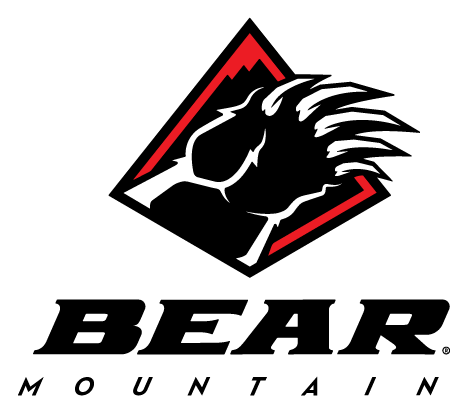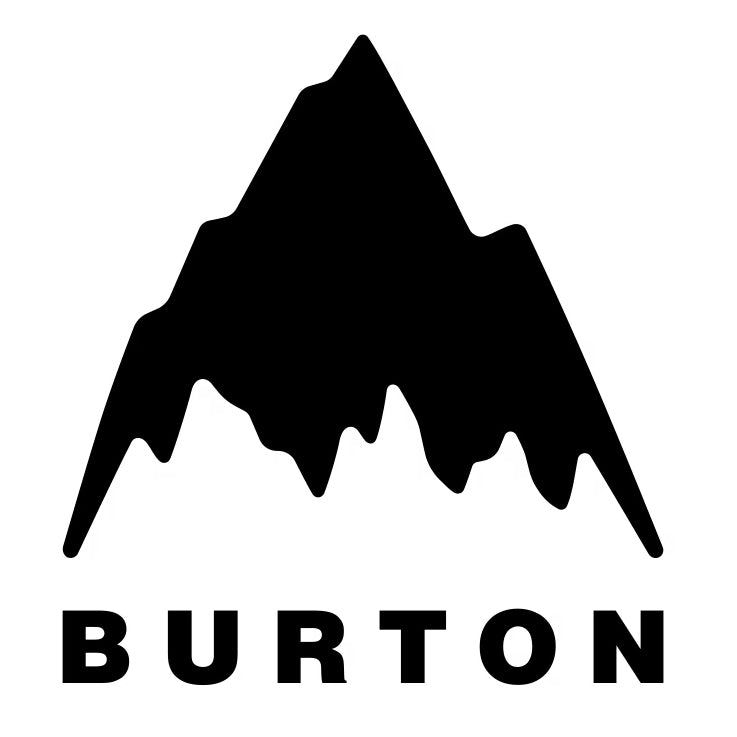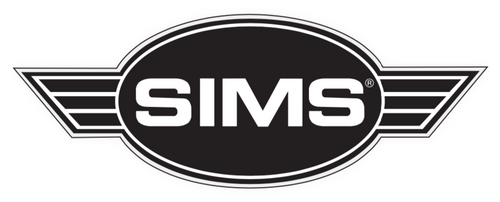Let’s get into that. Tell me about how the trip to India to ride the Peak of Evil came together.
Beginning months before even catching the flight to India, I’d say by February we had locked in an outfitter to help with in-country logistics. That includes climbing permits, transit, and base camp support. You have to register with the Indian Mountaineering Foundation to receive a climbing permit. At base camp, we needed to have a cook and a liaison officer that the Indian government assigns to you when you're going to try to climb a peak higher than 6,000 meters [19,700 feet]. Our liaison officer, Sandeep, was a super cool guy. He just did yoga the whole time. He was good energy to have around. But it’s a crazy job and a total waste of money because, in India, satellite phones are illegal because they're so close to China and Pakistan, and radios are illegal too. So the liaison is supposed to be there to help coordinate a rescue, but they don't have any means of communicating with the outside world.
With everything dialed beforehand, let's talk about what happens when you get to India.
We land in Delhi. There’s me, Jerry Mark, my riding partner, photographer Blake Gordon, and our cameraman Morgan Shields. It's 100 degrees, hot and sticky. The mountains couldn't feel further away, and we have an insane amount of gear. We are bringing all of our food with us—all of our dehydrated meals, stoves, tents, sleeping bags. Obscene baggage fees. Like 900 or 1,000 pounds of gear.
Is there freeze-dried curry?
Yep. Then you load everything up into a bus. Depending on where you're going, your transit cross-country can be the scariest part of the expedition. Driving on those roads is completely lawless. You are at the mercy of your driver. It took us two days of driving from Delhi to get to our final town.
Did you sleep on the bus?
No, we spent the night in this town called Kullu and stopped in this village called Tosh, which is pretty much the hash capital of India. This entire valley—you look at the hillsides, and there's just weed growing everywhere naturally. It's all over. It was there that we met our team of porters to help us carry everything up to base camp. Without porter support, what is a three-day trek would take you two weeks to ferry all of that gear up. It's just not realistic to do it on your own.
At what altitude was base camp?
Around 12,500 feet, so nothing crazy. From base camp, you just start gradually bumping loads further and further up the valley. You go up with a backpack full of gear, drop it off, dig a hole, mark it with the probe, and come back down. Then the following day, you bring more gear and go back up. Eventually, you can spend the night up at camp one, which is around 14,000 feet.
So base camp was basically the altitude at the top of Mammoth?
Pretty much, yeah. Then once you get everything to camp one and spend the night, you start the process again of moving everything up to camp two, which was atop the pass at 16,000 feet. You're moving with 50 pounds minimum each climb. It’s not easy work. It's incredibly hot during the day when the sun is out. Your face is melting off. Then at night, it's freezing. So you have these crazy temperature fluctuations. It's not until camp two, 10 days after landing in Delhi, that we could actually see the line for the first time. This whole time we were working our asses off, and we didn’t even know if the line was in rideable condition. You're going off of blind faith. The first view of the line is just beyond jaw-droppingly beautiful. It is huge, in your face, scary, daunting, alluring—all of the feelings wrapped up into one. It's a very intimidating first view, for sure. Once we had all of our gear at 16,000 feet, we went back down to base camp to rest and recover at lower altitude. We spent one or two nights there resting, which was the first downtime we had of the entire trip. Then came that final rotation where you're going up, and you're not coming back until the end of the trip.
Next came the push to high camp?
Then we started that process of bumping all the gear again to high camp at 18,500 feet. At this point, we're getting some really fun riding in. Every time you go up to drop a load off, you get to snowboard back down. You develop an intuition on these trips—sometimes everything just feels right. It just feels meant to be. Everything on this trip went perfectly according to plan, and things usually never go according to plan. So we were encouraged because we made progress every day without any hurdles. The weather was favorable. The snow conditions were favorable. We had maybe two storms over three weeks.
And no lightning.
Thankfully, no lightning this time. The day before the summit is spent resting and chilling at high camp to get prepared for the attempt. You go through your gear and meticulously make sure you have everything—packing your backpack, lining all of your pockets with snacks. Really triple-checking everything, tightening screws on your bindings, sharpening your crampons, just being incredibly anal about everything. I slept like shit the entire expedition, I think, because of nerves and excitement and also the altitude. But the night before our summit day was the best night's rest I'd had yet, so I woke up feeling ready to go. We woke up in the dark. We rode down to the base of the line with headlamps. You're wearing all of your layers. It's just arctic cold out. Man, that feeling of starting to climb after putting in so much work is liberating and exciting. We're like, "We're doing this."
How were the conditions?
The snow down low was variable. It was like a punchy wind slab, definitely not ideal, but nothing dangerous enough to warrant turning around. We knew that the sun would soften that section throughout the day. Me, Jerry, and Blake would just take turns breaking trail. Eventually, you get into this moving meditation, into this flow where you're barely talking to each other. You're just going through the motions, and it's just second nature at that point. There's a saying where you keep going until it doesn't make sense anymore. On that day, everything just kept giving us green lights. Once you reach that 20,000-foot mark, your pace slows drastically, and we started really, really slowing down.
Your body starts fighting itself.
It feels like you're breathing out of a straw. It was very challenging, but you have to keep moving in order to make progress. The line does not let up. Once you get into the heart of it, it is 50 degrees steep and sustained the entire way. It does not ease up at all. The top 200 feet of the line is the most technical part of it, where there was some glacial ice showing, coming through the snow. So at 21,000 feet, we're free solo ice climbing at the roof of the world. It was insane. I’ve got to admit, I'm not an ice climber. I can confidently say this was in the realm of the most extreme thing I've ever done, that any of us had ever done. But it still felt right. It never felt like we were hanging it too far out there. It didn't feel like we were stepping over the line. Everything felt justifiable.
And then you reached the Peak of Evil.
It was an emotional summit for all of us, for sure. The only other time I had shed tears atop a line was on Denali. It hits you like a wave. You're not expecting it at all. Maybe it's the altitude and the build-up. It was really special to be up there with those guys. We enjoyed it for maybe five, 10 minutes, but there wasn't any room to relax because we knew that the most serious part of the day was still below us—it was a technical descent where you needed to be firing on all cylinders, for sure.
Describe the descent.
The snow for that style of line was perfect. It was supportable, ankle-deep, stable, minimal sloughing. It was a trip because you would dig down with your hand and there'd be about a foot of snow resting on this sheer ice face, but it was just spackled and set up. Knowing that there's blue ice, and it's 50 degrees, I was kind of shocked that it hadn't slid. It was so steep that you would be on your heel edge and you'd put your hand down behind you, and it's just resting on the snow. You don't even need to lean back or anything. By no means were we charging down this face. But for an exposed, steep line, it was the perfect conditions to make controlled turns from top to bottom. It should be noted, at the bottom of this thing was a 500-foot serac. [A serac is a big, jagged block of ice found on glaciers, often towering like a frozen cliff.] So it's exposed, it's hairy, and it feels hairy, too. So it’s, by all means, the definition of a no-fall zone.
Did you ride holding your axes?
Two axes, yep. Total Chamonix style. If anything, it's more of a mental comfort than actually using them. But if you were to lose an edge, it increases your odds of being able to self-arrest, especially if you're on your heels. As soon as we got out of the exposure and the slope eased up a bit, we were able to ride it together and party all the way down the glacial tongue. It was like the most tiring, demanding dream line of our lives, for sure.
Then two weeks later you once again set your sights on Saint Elias in Alaska.
I've had a four-year saga with Mount St. Elias. St. Elias is this 18,000-foot giant sitting right off the coast of southeast Alaska, which has the potential to hold the longest descent in the world. This was my third attempt, second time actually on the mountain. In 2023, we flew up to AK and sat in a motel for two weeks in the rain and never touched snow. So I had already had this expedition in my mind, and to be honest, it was a bit of unfinished business that we, as a team—myself, Cody Townsend, and Bjarne Salen—needed to follow through with. I knew it was going to be a lot, going from one expedition to another, but I did have two weeks to rest and recover as much as I could, and I had mentally prepared for it. I was tired going into it, not going to lie—mentally, more than anything. At this point, it's the first week of June, so all of my friends are going on beach trips, they're going to see the Dead at the Sphere in Vegas, and I'm packing my snowboard bag to go up to Alaska. The obsession with Saint Elias was so deeply rooted that it was something we had to go back to do. But I knew subconsciously that this was going to be my last attempt on that mountain, no matter what happened, so I wanted to get it done. I wanted to move on with my life. I went into it with the mindset of, this is the last dance. We decided to start from the ocean this year, sea level. In 2021, we were dropped off on the shoulder, which is halfway up the mountain at 9,000 feet. So this time, we were adding a lot more to the plate, but also doing it in a more pure way and setting ourselves up for a true Alaskan adventure. We ended up hiking for hours through muddy riverbanks, holding bear spray, with ridiculously heavy backpacks, toward the snow line. We made great progress in the beginning, but once we made it up to this ridge around 5,000 feet, we got stuck in a whiteout. It was really warm, the freezing levels were really high, so the snow was super isothermic and unsupportable. And also, we were in a ping pong ball, so you can't safely move in those conditions.
What do you mean, “in a ping pong ball”?
Like when you're on a glacier and it's a whiteout, you can't see anything. We got pinned in the tent for five days, which tested my mental strength, but I was still fired up and motivated to make it happen. The weather cleared and we started to make more progress. At around 10,000 feet, we came around this corner, and we got our first view of the last pitch up to the high camp at 13,000 feet, and it just had this nasty sheen of gray to it, which looked like complete ice for 2,000 feet. It wasn’t looking promising. Bjarne and I went to do some recon, to see if the ice was reasonable enough to climb and ride down. Literally, just a few steps out of camp, there were these crevasses with some snow bridges. We were probing every step to see where it would be supportable, and had identified the safest area to cross, because it was a necessary evil. It was an objective hazard that we had to deal with if we wanted to continue up the mountain. I crossed this snow bridge and stopped one step too soon, and turned around to Bjarne and said, “Oh, dude, it's solid.” As I'm saying that, a trap door releases at my feet so fast, intense, and quickly that, man, I can liken it to the terrible gut feeling of hearing a “whoomph” in the snowpack just before an avalanche. I instantly dropped, and I reflexively extended my arms out to catch myself from falling into the crevasse. My pack and snowboard caught me on the back wall, and my extended arms caught me in the front, but I fell in up to my neck. When I looked down, I saw where the snow had deposited about 15 feet below me, but out of my peripherals, it was just black and bottomless. Once I realized that I had braced the fall, I pulled myself out, and onto the other side, but I had this instant writhing pain in my shoulders and neck. That night, I decided to sleep on it and see how I felt in the morning. When I woke up, I couldn't turn my head. I felt like I had been hit by a train. I decided to pull the plug. But it would still be two days until we got off the mountain. It was really warm, freezing levels were 9,000 feet, and so, the whole lower mountain was just deteriorating—wet slides, rockfall. That was my worst snowboarding experience ever. With a 60-pound backpack, if you lose an edge, you're done—you’re falling over a cliff or into a crevasse. I would later find out that I had torn my labrum in my right shoulder, and labrum, AC joint, and rotator cuff in my left.
It’s hard to comprehend riding in those conditions with that 60-pound pack and those types of injuries.
I've never been on a trip before where the mountain provided such instant feedback. You go into this scenario with these aspirational goals of riding off of the summit, and you get humbled so quickly and are reminded who is really in control. It’s so in your face that it's impossible to ignore. After that trip, I was flying home out of Yakutat through the Wrangell Mountains—an insanely scenic flight over the heart of that range—and it was golden light, 8:00 PM. I looked at a sea of mountains as far as the eye could see and had this other light bulb moment of, “Why was I so obsessed with this one peak for so long when there are so many other mountains out there?” And what is the type of experience that I'm searching for out here, and what brings me the most joy?
Did you find an answer?
Ultimately, it's about not knowing what's around the next corner. Being surprised by the potential of a dream line. The idea of the unknown. I realized that’s what is most exciting to me. I think there's a place for proud trophy lines out there, but that’s what is really exciting, and maybe the essence of freeriding. But it's still something that I'm trying to comprehend all these months later. If any rider wants to get humbled really quickly, just go to Alaska. At the end of the day, what I was searching for with Mount St. Elias, in particular, was a reason to move on from it. And while it would've been nice to have ridden off the top of this thing, the fact that we did put everything we had into it and tried was enough for me to feel content. It's like being in love with someone that keeps rejecting you over and over and over, but for some reason, you still keep going back. Then, finally, there's that one thing that’s a breaking point, and you're able to move on. That was the feeling. I was obsessed with the idea of the peak more than the peak itself.
But there will be more lines to come. It’s no different than freestylers inventing new tricks or jibbers looking down the alley for a new spot to hit. It’s what you do.
We are lifers in this sport. It’s a never-ending cycle that we chase from year to year. That’s the beauty of snowboarding, and the goal is to do this until we can’t ride anymore.
KEEP READING THE FULL ARTICLE BY SUBSCRIBING TO SLUSH HERE. DIGITAL ACCESS TO ALL ARCHIVED ISSUES INCLUDED WITH EACH PRINT SUBSCRIPTION!



















